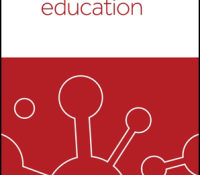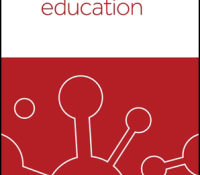eric.ed.gov har udgivet: This document, which is designed to assist workplace education practitioners in business, education, and labor partnerships funded through the Massachusetts Department of Education’s Workplace Literacy Program, includes materials about and/or for use in developing workers’ mathematics skills. The first section, which examines the current state of the art of workplace math programs, lists math skills needed in the workplace and strategies for teaching mathematics in the workplace (teacher as facilitator, integration into other curriculum areas, collaborative learning, development of individual problem-solving strategies, importance of process, use of hands-on activities/manipulatives, and application of learning). In the second section, the author relates her own experiences in developing and presenting workplace mathematics programs to help employees accomplish the following: improve job performance, pass an examination/test, and become better-informed employees. The… Continue Reading →
Like this:
Like Loading...
eric.ed.gov har udgivet: This report describes the conduct and outcomes of an experimental pilot study conducted in Spring 2004 to develop and test a model that aimed to enhance career and technical education (CTE) instruction with the mathematics already embedded in the curricula of six occupational areas. Although present in the CTE curriculum, math is largely implicit to both teachers and students. The impetus for the study is that many high school students, particularly those in enrolled in CTE courses, do not have the math skills necessary for today’s jobs or college entrance requirements. This research project was aimed at using an authentic context for teaching math skills. Preparation for the study began in the summer of 2003 with the nationwide recruitment of teacher-participants. CTE teachers who were interested in… Continue Reading →
Like this:
Like Loading...
eric.ed.gov har udgivet: This short paper is designed to serve as a kind of primer for professors interested in thinking through ways to build a rural dimension into mathematics education courses in the interest of squarely addressing the vision and mission of ACCLAIM. Few words, therefore, will be deployed in the interest of establishing an intellectual warrant for the assumptions and assertions embedded in these pages. In fact, all that will be said in this regard is that 1) the ascendancy of what is loosely referred to as “constructivist learning theory” over the past decade clearly elevates the role of context in the development of human understanding. In other words, if professors want students (pre-school through doctoral level) to achieve at high levels, the insertion of context is currently seen… Continue Reading →
Like this:
Like Loading...
eric.ed.gov har udgivet: This report describes a program for increasing math achievement through the use of musical interventions including repeated exposure to Mozart classical music and School House Rock, and introduction to teacher-made songs that introduce mathematical concepts in the music classroom. The students of the targeted second and fourth grade classes exhibited low levels of achievement according to local and national standards. Evidence for the existence of the problem included teacher- made pre-tests, parent questionnaires, and student questionnaires. Probable causes for low levels of student mathematical achievement were identified through a review of the literature and analysis of the setting and can be divided into student, home, school, teacher, and district influences. The following probable causes were cited: disabilities, classroom climate, motivation, problem behaviors, lack of homework support due… Continue Reading →
Like this:
Like Loading...
eric.ed.gov har udgivet: The concept of integrating mathematics and art course work broadens an appreciation of the connection between the two. Although calculations and getting the right answer have traditionally been the focus of mathematics at the secondary level, other topics have recently begun to be addressed, such as mathographics, or the relationship between art and mathematics, and creative constructions and shapes. Art instruction also includes considerable instruction in mathematics, as artists need to understand such concepts as parallel lines, visual distance, and perspective distortion. Moreover, many examples of mathematics in art works exist, such Albrecht Durer’s use of grids in woodcuts and Salvador Dali’s use of the hypercube, while there are also many examples of literature that support the mathematics/art connection. In interrelating mathematics and art at the college… Continue Reading →
Like this:
Like Loading...
tandfonline.com har udgivet en rapport under søgningen “Teacher Education Mathematics”: Abstract Abstract This paper explores the choice of math skills learning support by an undergraduate student cohort of Commerce and Business students at Flinders University, Adelaide, Australia. A survey methodology was used to determine the support students sought for the assumed math skills for a mandatory first-year microeconomics subject. The majority of respondents (71%; 120 of n = 169) sought support outside of class for their math skills during the semester. The major source of support was from informal networks of friends and family (62% of respondents), with 40% of respondents seeking help from only this source. University support services from the centrally provided learning center and individual tutoring at course and subject level, were used by 31.4% of respondents,… Continue Reading →
Like this:
Like Loading...
tandfonline.com har udgivet en rapport under søgningen “Teacher Education Mathematics”: Abstract Abstract Supporting the 21st-century learners’ instructional needs is a trend of today’s educational system. This educational design research aimed to develop a Digital Interactive Math Comics (DIMaC) as an instructional material envisioned to meet these learners’ needs to a better understanding of Mathematics concepts. This employed the ADDIE framework for instructional material development design. There were 425 randomly chosen students who took the validated and acceptable with 0.7888 Cronbach’s alpha researcher-made General Mathematics Competency Test. This was done to identify the least learned skills and be the basis for design and development. The initial storyline with the Mathematics contents integrated were validated by the set of experts before the electronic illustrations and coding took place. The initial outputs of… Continue Reading →
Like this:
Like Loading...
eric.ed.gov har udgivet: English language learners (ELLs) and students with disabilities are two groups specifically targeted in NCLB for which schools must demonstrate “adequate yearly progress.” However, ELLs with disabilities, a category where these two groups overlap, are not specifically mentioned in the No Child Left Behind Act (NCLB). Students with “high-incidence” learning-related disabilities (e.g., speech and language impairments, learning disabilities, and emotional/behavioral disabilities) in particular exhibit unique educational needs likely to place them at risk as schools strive to improve academic outcomes across the range of students specifically targeted in NCLB. With the rapid growth of the population of ELLs in the U.S., schools have an urgent need for research-based information on how to instruct ELLs with disabilities in grade-level content. This report describes a series of single-subject studies… Continue Reading →
Like this:
Like Loading...
eric.ed.gov har udgivet: Teacher preparation curriculum at Technion–Israel Institute of Technology (Israel) includes courses intended to bridge the gap between the pure mathematics courses and those in psychology. The focus of this paper is an experimental program for one of these courses and data collected while implementing it. This is a second report on a naturalistic study in which mathematical paradoxes were used in the preservice education of high school mathematics teachers. The potential of paradoxes was tested for improving student-teachers’ mathematical concepts and raising students pedagogical awareness of the role of falacious reasoning in the development of mathematical knowledge. Discussions include the psychological and mathematical background, the experimental courses and data collection procedures, the students, and findings. Examples of paradoxes are given. Included are 36 references. (DC) Link til… Continue Reading →
Like this:
Like Loading...
eric.ed.gov har udgivet: Hispanics are one of the largest and fastest-growing minority groups in the United States. Projections indicate a need for an increase of 20% of practicing engineers by 2010. Despite the growing number of STEM (Science, Technology, Engineering and Math) careers in the American economy, education statistics suggest that too few Hispanic students are being encouraged and equipped to take advantage of opportunities in technical disciplines. American business and industry and the nation’s Hispanic communities would both benefit from addressing this mismatch. In summer 2007, the IBM International Foundation asked Public Agenda to interview Hispanic and Latino leaders in a variety of fields, asking for their views on what will be needed to bring more Hispanic students into the technical and scientific disciplines. This report is based on… Continue Reading →
Like this:
Like Loading...

